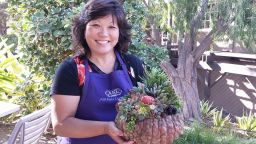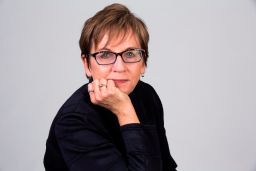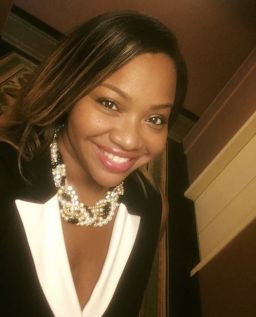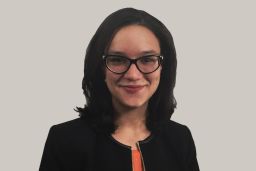Immigrants didn’t always have to be exceptional to seek a new life in America.
There was a time when an eager man or woman needn’t speak English or hold an advanced degree to build a future here – and to contribute to the nation’s greatness.
As calls for a merit-based immigration system mount, the notion that similar rules might have barred their ancestors from entering the country has ignited anger among some native-born Americans. They wonder how their families, their own lives and their homeland might have developed differently if their forebears, many of them unskilled and illiterate, had been rejected by America.
Generations later, these descendants point to their relatives’ toil and the hard work invested by their children and grandchildren as evidence that a stacked résumé is far from the only measure of long-term good that an immigrant can bring to the United States.
These are their stories.
My grandfather fought in WWII and became an engineer
Jonathan McEuen’s great-grandparents and his grandfather arrived from Slovenia in 1924.
“My grandfather helped fight in World War II. He helped develop utilities and telecom systems in this country,” McEuen, 36, a vice president at a US manufacturing company, said of the man for whom he’s named. “He raised two kids, who raised four kids, who are all raising families of their own, are all gainfully employed and have successful careers and work really hard.”

The Kastelics, who became the Kastles in America, left their jobs as farmers in rural Central Europe for the promise of work. No one spoke English or had many skills, so McEuen’s great-grandfather took a job as a coal miner. His wife worked as a seamstress.
As McEuen’s grandfather grew up in West Virginia and Ohio, he stayed in school, became an accomplished athlete in three sports and held an after-school job. John Kastle and his brother were the first in their family to graduate from high school.
It was Bell Labs that gave the young immigrant the opportunity that would change his life, McEuen said. He placed well on an employment entrance test. “Ma Bell” acted like a second mother.
“They taught him how to drive, and they taught him advanced math. It was school and work combined,” the Boston resident said. “His role evolved a lot because he was given a lot of support. You don’t hear about that anymore.”
Kastle climbed the ranks as an engineer. One of his children, McEuen’s mom, worked for the World Bank. McEuen’s brother is a classically trained opera singer.
McEuen loves retelling his grandfather’s story to teach his two children about where they came from.
“He didn’t have any opportunities to achieve these things easily, and he achieved them anyway,” McEuen said of his grandfather. “That’s the one takeaway that I take away every day when I think about him.”
My grandparents and parents survived Japanese internment camps
Teri Kuwahara’s grandfather, Kamezo Suzuki, came to California in the 1910s with his dad. He was 17 and didn’t speak English, but he gave himself an American name – Leo – and managed to learn the language.
A decade later, Suzuki brought over his Japanese bride, Yoshi, as part of an arranged marriage. They lived on a farm and raised a family alongside other Japanese farmers in Dominguez Hills.
Then, the Japanese attacked Pearl Harbor.
Under President Franklin Roosevelt’s orders, more than 100,000 people of Japanese descent were taken from their homes and incarcerated in Japanese internment camps.

The Suzukis and their six American-born children left behind everything they couldn’t carry. They were shuffled from 1942 to 1945 among three prison camps, which had small army-style barracks with open showers and toilets.
“My mother said sandstorms would just whip up and blow sand into everything,” said Kuwahara, 62, of Torrance, California. “The average space for a family was maybe 16-by-20, and everybody had to fit into that one space, so there was no privacy.”
The family was released from a camp in Gila River, Arizona, when Kuwahara’s grandfather got a job at a plant nursery in New Jersey. It took another year before they returned to California, after Japanese residents were allowed back to the West Coast.
“They just put it on a shelf … and then tried to live the American life, have the American dream and be 300% American,” said Kuwahara, who didn’t learn of her ancestors’ internment until she was in college.
Kuwahara’s mother, Jane Suzuki, went on to manage a school office. Kuwahara, the first in her family to graduate college, retired as a high school counselor. Her sister teaches high school math. Her son works in business development at a pharmaceutical company, and her daughter helps college athletes stay on top of their grades.
Her family’s story, Kuwahara said, aligns with a Japanese expression of gratitude called “okagesamade,” meaning, “I am because of you.”
“We just all need to remember where we came from,” she said. “I want my kids to understand that we are who we are because of our ancestors who came here.”
My grandmother helped save people from the Spanish influenza
Mary Coppi never finished grammar school in Italy, but she changed lives when she came to America.
The Spanish influenza hit when she was a teenager living in Vermont. It was 1918, and the bodies of victims lay in the street. Supplies ran low. Coppi cared for her neighbors – and never fell ill.

“I couldn’t imagine what it was like during the Spanish influenza when she was taking care of everyone. She went from neighbor to neighbor and did whatever she could for them,” her granddaughter, Heather Gregson said.
Gregson’s grandmother was a housekeeper who dreamed of being a nurse. She never got the necessary schooling, but a doctor trained her to be his assistant.
Steadfastly proud of her grandmother, Gregson cannot tolerate the current immigration debate.
“Unless you’re 100% Native American, you’re a descendant or you’re an immigrant to this country by one generation or multiple,” the Everett, Massachusetts, resident said. “How dare people have an attitude that some immigrants are better than others because of the country they came from.”
Limiting immigrants to those with skills needed to support US industries defies the values upon which America was built, Gregson said.
“It spits in the face of this country and everybody who built this country,” she said. “I’m very proud of where my family came from and what they’ve done.”
My Polish grandmother entered America ‘unlawfully’
Michael and Mary Dudziak left Poland in the 1910s, but their journeys were separate – and very different.
“In order to be admitted to Ellis Island, my grandmother pretended to be a member of another family. That’s one of the reasons why she then never winded up becoming a US citizen,” said her granddaughter, also named Mary Dudziak, who is a law professor at Emory University in Atlanta.

At a time when women were considered dependents, her grandmother moved to a Polish-American community in Adams, Massachusetts, where everyone spoke Polish. She never had to learn to speak English fluently.
“Whenever anyone says, our people, i.e. white people, we came over the right way and we followed all the rules, what I say is my grandmother, for whom I am named, basically came over unlawfully,” she said. “I talk about my grandmother and my family’s story as a way of countering this idea.”
The elder Mary Dudziak met her husband, raised four boys and took a job at a paper mill alongside her spouse, her granddaughter said.
“My grandparents are exactly the kinds of people (who) would have been excluded from a ‘merit-based’ approach to immigration,” she said.
One of their sons – the younger Mary’s father, Walter – started college, then got drafted during WWII.
“He was slated for basic training, and they did intelligence testing for draftees,” Dudziak said. “He got drafted into the Manhattan project, which was the development of the atomic bomb.”
Though the work was classified, Dudziak said her father had a role in photographing underground blasts. After the war, he finished college and went on to the University of California, Berkeley to complete a doctoral degree.
He spent his career working as a nuclear physicist.
His children – Dudziak and her siblings – became a professor, a hydrogeologist, a neuropsychologist and an engineer.
My children come from Caribbean, European and slave ancestors
Atira Charles is Italian and Barbadian, with Native American and slave roots.
On her father’s side, her great-great-grandfather came from Italy in the late 1800s and fell in love with a Native American lounge singer. On her mother’s side, her great-great-grandmother, Eustace “Eya” King, left Barbados between 1900 and 1910 for the United States, where she did domestic work.

Charles’ lineage also traces to slavery in North and South Carolina, she said.
“It’s a classic story of how immigrants, and even slave descendants, found their ways to each other to create a pretty awesome lineage,” said Charles, 35, of Tallahassee, Florida.
“Especially in the black narrative, from the West Indies … and then with my great-grandmother being Italian, people don’t think about the story lines people come from to create what they see now.”
Charles and her husband, whose grandparents left Haiti for better opportunities in the United States, relish teaching their daughter and twin boys about their family’s diverse ancestry.
“From a very young age, we communicate to them, ‘You’re a mix of a lot of different things.’ But we also communicate very clearly to them that their story is the American story and is the story of black people,” said Charles, an assistant business professor at Florida A&M University.
She also uses her family’s heritage as a way of teaching their children – and others, in her work as a diversity consultant – that there’s more to a person’s lineage than skin color.
“(People) see young black people doing successful things and just see them as exceptionally excellent, instead of realizing they come from generations of people that have made a difference here and abroad,” she said.
“All of us just look black, but we have different ethnicity backgrounds in our family, different racial backgrounds in our family,” she said, “and I think that’s more of the American story than not.”
My great-grandparents escaped anti-Semitism in Belarus
In the early 1900s, Menasheh Chykind and Hinde Goldenstock fled anti-Semitism in Belarus, then part of Russia. They wanted freedom.
“My great-grandparents were just two of those many, many Jews who left Russia and came and lived in tenement homes in New York,” their great-granddaughter, Rebecca Brown, told CNN. They took the surname Aronson and changed their first names to Morris and Anna.

They only spoke Yiddish, so they found jobs that didn’t require English. Brown’s great-grandfather became a carpenter and his wife worked at a factory, while also raising their four children. Morris Aronson studied to be a rabbi.
“If they had had it so easy, if they had spoken the language, if they had known a bunch of people here … I wouldn’t be in awe the same way that I am knowing how much they struggled before they found success, before the next generation found success,” Brown said.
Their survival stories resonate with Brown, who still hears them from her 97-year-old grandmother, Sarah, who lives in Maine.
Brown’s grandmother became a special education teacher and her mother a lawyer. Brown, 26, works in development for a nonprofit organization in Washington that fights for religious freedom.
Life has a way of coming around like that sometimes.
“They’re far braver than I am,” Brown said of her great-grandparents. “I wished I could thank them for coming here.”
Correction: A previous version of this story misspelled the last name of Jonathan McEuen's ancestors, the Kastles.
CNN’s Lindsay Benson contributed to this report.





